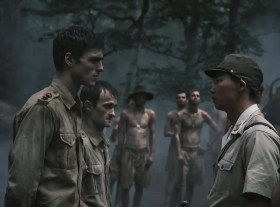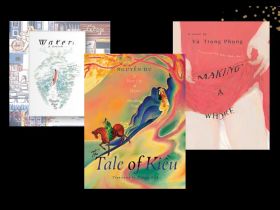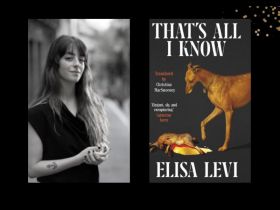Writer Hanif Kureishi caused controversy earlier this year when talking about his role as a research associate on the creative writing course at Kingston University. The celebrated author of My Beautiful Laundrette and The Buddha of Suburbia attacked creative writing courses in general, calling them “the new mental hospitals”.
“One of the things you notice,” Kureishi stated, “is that when you switch on the television and a student has gone mad with a machine gun on a campus in America, it’s always a writing student. The writing courses, particularly when they have the word ‘creative’ in them, are the new mental hospitals. But the people are very nice.”
Kureishi claimed to be teaching for the sake of passing on his skills and knowledge, stating: “I felt if I knew something, I should pass it on.”
However, he also questioned the possibility of teaching creative writing at all, saying: “I always give people the same mark – 71% – and then you write these reports. I always say they were well-behaved, well-dressed … But how can you mark creative writing?”
The question of how to mark creative writing, and indeed on what grounds to judge the standard of written work, is one that has long plagued the literary world. Within any one publishing meeting there will regularly be widely varying views about the merit of a piece of writing. The rating of a work is often entirely subjective and the success of a writer governed by the taste of whoever in that publishing meeting has the greatest influence.
How, then, can universities hope to teach a skill that is seemingly so subjective and abstract? Many are cynical about the courses, suggesting that they extract huge fees from students giving the promise of introductions to the world of publishing. The number of students who successfully publish is inevitably low and the courses seem, in this aspect, to fall below the standards advertised.
Universities also come under scrutiny for their employment of high-profile writers at exorbitant fees. One notable example is the University of Manchester, which announced the engagement of Martin Amis as visiting professor of Creative Writing at the beginning of this year.
Under freedom of information legislation Amis’ salary was revealed to be £80,000 a year, which amounted to £3,000 per hour of teaching time, placing it in the realms of the salaries of professional footballers. Disgruntled staff at Manchester criticised the move in the face of redundancy throughout the institution. However, once Amis was appointed to the role, applications to the course increased by 50%. This in itself suggests that the move to employ Amis and the establishment of the course may have been used as a money-making opportunity on the part of the university.
There is no doubt that the teaching of Creative Writing is a new discipline and one that comes under great scrutiny. However, is it really any more difficult to teach Creative Writing than it is to teach the equally abstract and subjective subjects of Art and Music?
There are rules and laws to follow in the creation of literary works, just as there are in the creation of paintings and symphonies. There is no reason why a course couldn’t teach the traditional techniques of rhetoric, the variety of narrative styles, the development of character and the importance of drafting in the same way that a course in Art will focus on the observation of anatomy and the study of perspective. Why is literature and the creation of imaginative writing taught to youngsters and then overlooked on the school syllabus when Art and Music are taught up to GCSE and A-level?
Reading the information provided at the English Subject Centre of the Higher Education Academy provides a different perspective of creative writing courses to those often portrayed in the media. In its own words, “Since its inception in October 1999 The English Subject Centre has worked to promote active debate about the teaching and learning of Creative Writing”.
A report available on the site, ‘Teaching Creative Writing at Undergraduate Level: Why, How and Does it Work?’, written by Dr Steve May of Bath Spa University College, provides some unique insights into the discipline. He stresses the fact that most students improve in technique, suggesting that the discipline can be successfully taught. Perhaps the most surprising of his revelations, however, is that many undergraduate Creative Writing students have no aspiration to become published writers.
Perhaps this is why Kureishi finds it difficult to understand his students. Someone so commercially successful may find it difficult to see the motivation for those without dreams of fame who simply want to improve their skills and study something they have not been taught since primary school. These students appreciate that there is more to writing than the ends of publishing and making money, and more to Creative Writing courses than a feeding of writers’ egos and a balancing of university books.
Nobody would think cynically about students hoping to study a more established discipline like music or painting, and yet the writing world seems to be inseparably tied to profit. Instead of concentrating on the fiscal and commercial aspects, Creative Writing should be seen as a useful discipline in itself. It is an aid to reading more intelligently and a means of improving the skills of communication and imagination, and not merely a route to gaining a publishing contract.
Sources:
www.guardian.co.uk/books/2008/may/27/hayfestival2008.guardianhayfestival2
www.english.heacademy.ac.uk/archive/projects/reports/under_creatwrit_bath.doc
www.guardian.co.uk/uk/2008/jan/26/highereducation.books?gusrc=rss&feed=books
www.guardian.co.uk/books/2005/oct/29/featuresreviews.guardianreview14




